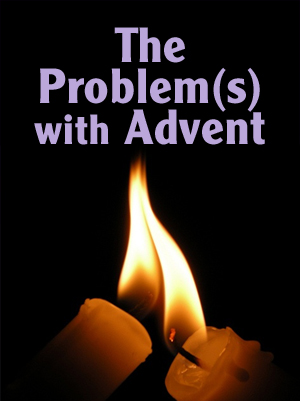Teaching Advent Through Poetry
Two Advent Poems Written by Best Friends
 1600 years ago two fellows from different walks of life met in Milan, Italy.
1600 years ago two fellows from different walks of life met in Milan, Italy.
Ambrosius had the odd distinction of being elected bishop before he was baptized. He was awarded the position on the basis of character. He was likable! He was not ordained. He had not studied theology. He underwent an early “on the job” training program! Fortunately, he excelled!
Augustine found his way into the Church through a back door, coming from a life of debauchery. His mother, Monica, was devoted to her wayward son. Her prayers were answered but not before he had fathered a child out of wedlock. He was attracted to the church by Ambrose’s sermons.
Both became great teachers and writers in the Church. Both tried their hand at poetry.
One of the problems with Advent is that the hymn traditions of Advent rely on understanding both poetry and scripture. Rare today.
Poetry doesn’t fit our modern attention spans. Modern hymns rarely have more than one verse. Hymn writers have run out of things to say! Our mind’s eye, bombarded with visual images, is losing its imaginative vision.
Nevertheless, there is a teaching opportunity in the wealth of poetry that has been set to music. Advent is so short that we flit from one great poem/hymn to another. Unless we sing in the choir, we never really learn them. They remain foreign to our ears.
Add to that, they tend to be melodically different, clearly belonging to other centuries. It is easy to put them aside to try to understand them next year.
Advent hymns cover a breadth of scripture — not just a Bible story or two. They span the Old Testament right through to Revelation. So while the purpose of Advent is to slow down and meditate, we end up rushing through it.
In an attempt to introduce the theologically deep hymnody of Advent, concentrate on the poetry of these two old friends — known today as St. Ambrose and St. Augustine.
Ambrose wrote “Come, thou Redeemer of the Earth.”
Augustine wrote “Christmas.”
Ambrose’s poem can be studied verse by verse.
Augustine’s poem breaks nicely into couplets (each of which would make nice “Tweets” to your congregation).
Augustine’s poem evokes imagery which is likely to appeal to the modern reader of poetry. It relies on an understanding of theology and is therefore a good chance to explain the Bible’s many and diverse Advent scriptures.
Start with the simpler poem!
You might repeat this poem together responsively before each Advent service, so that it becomes familiar.
Christmas
Maker of the sun,
He is made under the sun.
In the Father he remains,
From his mother he goes forth.
Creator of heaven and earth,
He was born on earth under heaven.
Unspeakably wise,
He is wisely speechless.
Filling the world,
He lies in a manger.
Ruler of the stars,
He nurses at his mother’s bosom.
He is both great in the nature of God,
And small in the form of a servant.
Come, Thou Redeemer of the earth
Come, Thou Redeemer of the earth,
And manifest Thy virgin birth:
Let every age adoring fall;
Such birth befits the God of all.
Advent means come. But no one expected the Messiah to come this way!
Begotten of no human will,
But of the Spirit, Thou art still
The Word of God in flesh arrayed,
The promised One to man displayed.
Here we have the imagery of John—The Word became flesh.
The virgin womb that burden gained
With virgin honor all unstained;
The banners there of virtue glow;
God in His temple dwells below.
Forth from His chamber goeth He,
That royal home of purity,
A giant in twofold substance one,
Rejoicing now His course to run.
The verse about the Virgin is often cut from Protestant hymnals but without it we don’t really know from what “chamber” Christ is going. It takes two verses to grapple with the idea that Jesus is both God and Man — the twofold substance.
From God the Father He proceeds,
To God the Father back He speeds;
His course He runs to death and hell,
Returning on God’s throne to dwell.
O equal to the Father, Thou!
Gird on Thy fleshly mantle now;
The weakness of our mortal state
With deathless might invigorate.
And then God/Man goes to work to redeem the world.
Thy cradle here shall glitter bright,
And darkness breathe a newer light,
Where endless faith shall shine serene,
And twilight never intervene.
Light and candles are symbols of Advent. Christ brought new light into the world.
All laud to God the Father be,
All praise, eternal Son, to Thee;
All glory, as is ever meet,
To God the Holy Paraclete.
Many hymns end with the invocation of the Trinity. This is no different. Paraclete means advocate. The Holy Paraclete is the Holy Spirit.
The tune used for this hymn is also an Easter hymn—That Easter Day with joy was bright. It remains an easy tune to the modern ear.
There is a lot of power in these two poems. Take the time with your congregation to dig into their meaning. In other words, use them more than once!
